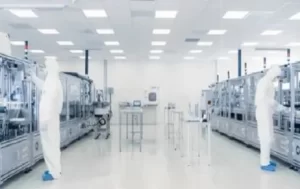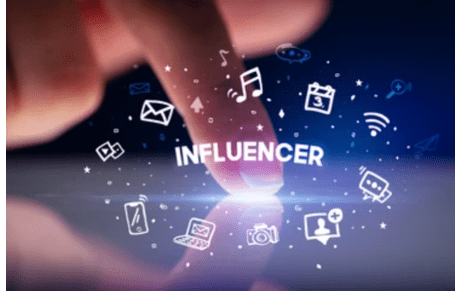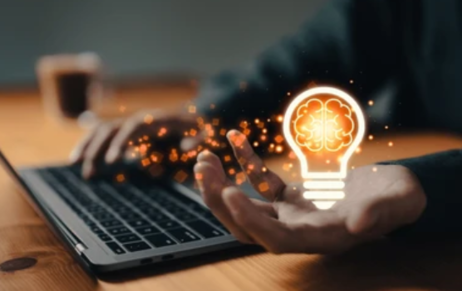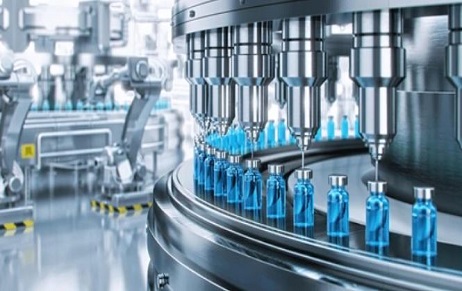A social media influencer is someone who creates content based on their niche in various…
Impact of other related Intellectual Property rights on the Pharmaceutical Industry
Introduction
A “patent” is a right granted by a state to an inventor for a fixed period i.e., 20 years in India in exchange for the disclosure of the invention. However, since several fields are involved in the development of medical devices – including biotechnology, computer science, mechanical engineering, electronics and pharmaceuticals – navigating the Indian patent landscape is challenging.
The fundamental patentability criteria are universal namely: novelty, inventive step, non-obviousness and industrial applicability. To qualify as a patentable invention, the invention:
- must not be in the public domain or have been published or used previously;
- must not be obvious and must involve a technical advancement; and
- must be capable of being implemented commercially.
Inventions must also not fall within the scope of non-patentable subject matter according to law. Non-patentable subject matter varies from country to country.
In India, the claims of a medical device invention broadly fall within the ambit of the following embodiments:
- a medical device per se;
- the software involved in the device;
- diagnostic kits;
- a method of diagnosis; or
- system claims.
Section 3(f) of the Patent Act states that “the mere arrangement or re-arrangement or duplication of known devices each functioning independently of one another in a known way” is not patentable.
Therefore, a medical device that is not simply an arrangement or rearrangement of known devices, each of which functions independently of one another in a known manner, is patentable in India subject to its novelty and inventiveness.
Patenting of medical devices
Medical device companies continue to value patents as the strongest form of intellectual property for their mechanical devices, such as catheters, heart valves, spinal implants, neurovascular coils and many others. The portion of the total market that involves electronically enabled medical devices continues to expand. More and more involve collecting data that is processed via algorithms “in the cloud”. These latter technologies often rely more heavily on trade secret protection, due to recent evolution in the law that reduces the availability of patent protection for algorithm-based innovations. While branding may also be important, especially with larger, established companies, trademark protection is generally less critical because it may protect the name, but does not prevent competitors from copying the function or form of a medical device.
[Image Sources : Shutterstock]

Medical devices are patentable in India with certain caveats. Section 3 of the Patents Act lists statutorily non-patentable inventions, which pose a challenge to patentability depending on the subject matter claimed. In summary, a patent application for a medical device in India is often objected to under Sections 3(i), (f), and (k). Section 3(i) is unique to this jurisdiction and precludes the patenting of methods of treatment in general. However, there is no bar in obtaining a product patent for a medical device.
Section 3(i)[1] is relevant regarding medical devices as it prohibits the patenting of “any process for the medicinal, surgical, curative, prophylactic diagnostic, therapeutic or other treatment of human beings or any process for a similar treatment of animals to render them free of disease or to increase their economic value or that of their products”. Therefore, claiming methods of use or the operation of a medical device for any treatment or diagnostic procedures is best avoided in patent applications.
A case in point is patent application 634/MUMNP/2010, where the claims recited a method for monitoring the pressure of an inflatable cuff of an airway device, and did not mention any use of the device on the human body. The Controller in this case rejected the application on the grounds that the scope of the claims, when read with the specification, was clearly directed to the use of the device for a method of treatment of a patient during a medical procedure.
The patentability of mechanical devices, in general, also falls under the purview of Section 3(f)[2]. This section prohibits patenting of inventions that are “the mere arrangement or re-arrangement or duplication of known devices each functioning independently of one another in a known way”. This was further clarified in Biswanath Prasad Radhey Shyam Vs. Hindustan Metal Industries[3] where the court held that “in order to be patentable, an improvement on something known before or a combination of different matters already known, should be something more than a mere workshop improvement; and must independently satisfy the test of invention or an ‘inventive step’. To be patentable, the improvement or the combination must produce a new result, or a new article or a better or cheaper article than before. A combination of old known integers may be so combined that by their working interrelation, they produce a new process or an improved result. Mere collocation of more than one integer or things, not involving the exercise of any inventive faculty, does not qualify for the grant of a patent.” In essence, one is required to show the working interrelationship between the different components of the device, and demonstrate how this contributes to the inventiveness, i.e., the technical advance of the invention.
Finally, devices that involve the use of software may be objected to under section 3(k)[4], which bars the patenting of algorithms and computer programmes per se. In many cases, the working of a device may be closely interlinked with the use of a specialized software, for example, tele-robotic surgery, or the accurate measurement of a physiological parameter. In such cases, it is recommended to describe the precise working of the software with the hardware components to obtain a tangible result.
3D Printing
Pharmaceutical businesses are always on the lookout for novel medication design ideas, focusing on material qualities, procedures, and technologies. In order to obtain tailored drug dosing and develop a patient-centric product, 3D printed pharmaceuticals have created breakthroughs in all three areas.
Utilizing a 3D printer to create patented objects and then using those products would unavoidably be considered infringement under the 1970 Act. The main issue with additive manufacturing stems from the existence of websites like Thingiverse and Shapeways, which allow members of the ‘Do-It-Yourself community’ (‘DIYers’) to create and share designs for free. Patent breaches, both intentional and unintentional, are made easier when ideas are in the form of CAD files since they may be quickly transferred.
An invention must meet the standards specified in 2(j)[5] as well as pass the grounds listed in sec 3 to be patented under the 1970 Act. As a result, it must be new, contain an inventive step, and be industrially applicable. It also cannot be one of the exceptions listed in Section 3 of the 1970 Act[6]. This might cause a lot of confusion in the world of 3D printing. Bio printed organs, for example, may not be able to be copyrighted because they are considered “naturally occurring.” However, following the United States Supreme Court’s decision in Association for Molecular Pathology v. Myriad Genetics,[7] it seems likely that 3D printed organs will be able to be patented, although naturally existing materials will not. However, in the context of India, the decision can be different. Patents on “plants and animals in whole or in part” are prohibited under Section 3(j) of the 1970 Act.
Protecting Undisclosed information
The protection of undisclosed information is an important facet for pharmaceutical industries, R&D Institutions, and other agencies. Undisclosed information, generally including trade secret or confidential information including formula, pattern, compilation, program, device, method, technique, or process requires heavy protection. Well, protection of undisclosed information or trade secret is not new to humanity and we have seen it even from an ancient angle; at every stage of development, people have evolved methods to keep important information secret, commonly by restricting the knowledge to their family members. Trade-Related Aspects of Intellectual Property Rights (TRIPS) does provide a provision for the protection of undisclosed information.
Under Article 39 of the TRIPS[8], members are obliged to ensure the protection of undisclosed information through a system developed through appropriate legislation. Patents Act 1970[9] helped the Indian Pharma Industry to become a vibrant and globally competitive segment in the area of bulk drug production. Nevertheless, our Indian Act does not talk about the protection of the Trade Secret of undisclosed information. With regards to Article 39 of TRIPS, even many of the documents submitted in pursuance of patent documentation are not bound by secrecy clause and illegal access to such trade secrets is common.
For undisclosed information, having no legislative backing, it is very pertinent for the industry to establish and maintain trade secrets. As held by the Delhi High Court in the case of American Express Bank v. Priya Puri,[10] trade secret is information which, if disclosed, will cause real or significant harm to the owner. Any type of information can be protected as a trade secret, with the only criterion being that the information has potential economic worth and that the owner took reasonable steps to keep it secret. The protection of information as trade secrets does not provide a statutory right as there is no governmental intervention in the form of a legislation. Trade secrets are not limited by the number of years unlike patent protection which lasts for 20 years and upon expiration thrusts the invention into public domain.
Biopiracy and pharmaceutical industry
Biopiracy is usually defined as the stealing of traditional knowledge that would otherwise be held by indigenous people. Within a single indigenous society, there are several examples of significant applications of local flora or animals. Corporations may become aware of these applications and want to patent and market them for their own benefit. Companies frequently try to patent indigenous knowledge, as well as the products and processes produced from it.
Pharmaceutical firms are allowed to make millions of dollars in sales from some traditional treatments, according to these critics, with little or no compensation to the indigenous knowledge holders. The perceived unfairness of patenting a treatment that had been used to cure wounds in India for hundreds of years was a major point of contention for opponents of the Turmeric Patent. It was also a problem with Eli Lilly’s utilization of the Madagascar rosy periwinkle, which brings in $100 million in revenue each year.
Individuals and businesses in India have been utilizing neem tree extract to repel insects and bacterial infections for generations. W.R. Grace & Co. wanted to force Indian companies producing neem-based products to licence its technology after receiving a patent on a variant of this extract. Local businesses were concerned that the patent would prevent them from exporting goods to the US market, raising the price of neem seeds.
Conclusion
One of the greatest issues of justice of our times is the validation and vindication of the rights of indigenous people under international law, the protection of their cultures and lifestyles and the safeguarding of their intellectual property heritage. There are an estimated 300 million indigenous people in over seventy countries worldwide. They have retained social, cultural, economic and political characteristics that are distinct from those of the dominant groups in their respective societies. They have fought strenuously for the recognition of their identities, nationally and internationally.
On the other hand, the companies have applied for and attained the patents for the packaging and labelling of the pharmaceutical products. Gaining such protection is not difficult for the corporations. The complicated applications are related to the traditional knowledge and stratum-specific traditions.
Author : Tanya Saraswat, in case of any queries please contact/write back to us via email to [email protected] or at IIPRD.
References
- Anuja Saraswat, 3D printing in pharmaceutical industry – patent – India 3D Printing In Pharmaceutical Industry – Patent – India (2022), https://www.mondaq.com/india/patent/1183060/3d-printing-in-pharmaceutical-industry (last visited Apr 20, 2023).
- Obhan and Associates, Medical Devices: Basis of Patenting and Entering in the Indian Market Lexology (2020), https://www.lexology.com/library/detail.aspx?g=056861c0-14db-4e15-afd4-bacaf7dbd051 (last visited Apr 20, 2023).
[1] Section 3(i) states “any process for the medicinal, surgical, curative, prophylactic diagnostic, therapeutic or other treatment of human beings or any process for a similar treatment of animals to render them free of disease or to increase their economic value or that of their products.”
[2] Section 3(f) states “the mere arrangement or re-arrangement or duplication of known devices each functioning independently of one another in a known way” is not an invention.
[3] (1979) 2 SCC 511.
[4] Section 3(k) states “a mathematical or business method or a computer programme per se or algorithms” is not an invention.
[5] Section 2(j) defines an invention as “a new product or process involving an inventive step and capable of industrial application.”
[6] Section 3 of the act provides an overview of items which shall not be considered invention for the purposes of patent protection.
[7] 569 U.S. 576.
[8] 1. In the course of ensuring effective protection against unfair competition as provided in Article 10bis of the Paris Convention (1967), Members shall protect undisclosed information in accordance with paragraph 2 and data submitted to governments or governmental agencies in accordance with paragraph 3.
- Natural and legal persons shall have the possibility of preventing information lawfully within their control from being disclosed to, acquired by, or used by others without their consent in a manner contrary to honest commercial practices so long as such information:
(a) is secret in the sense that it is not, as a body or in the precise configuration and assembly of its components, generally known among or readily accessible to persons within the circles that normally deal with the kind of information in question;
(b) has commercial value because it is secret; and
(c) has been subject to reasonable steps under the circumstances, by the person lawfully in control of the information, to keep it secret.
- Members, when requiring, as a condition of approving the marketing of pharmaceutical or of agricultural chemical products which utilize new chemical entities, the submission of undisclosed test or other data, the origination of which involves a considerable effort, shall protect such data against unfair commercial use. In addition, Members shall protect such data against disclosure, except where necessary to protect the public, or unless steps are taken to ensure that the data are protected against unfair commercial use.
[9] Act 39 of 1970.
[10] (2006) IIILLJ 540 Del.



